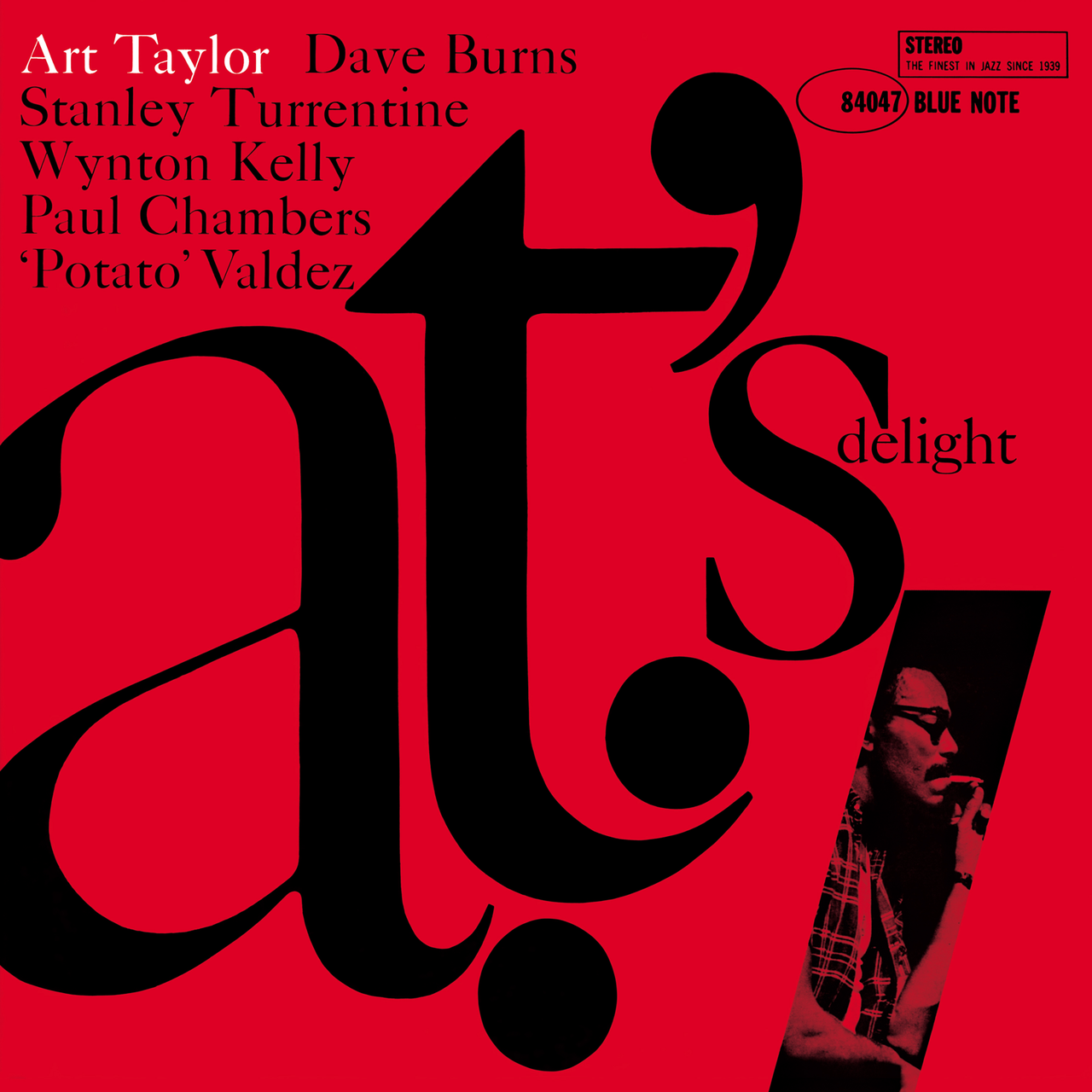Just for the fun of it I took a peek in my record collection to find albums drummer Art Taylor played on; a cinch, as Taylor appeared on many quality sessions, mostly for Prestige and Blue Note. I have particularly fond memories of Taylor’s sparse work on John Coltrane’s Trane’s Slo Blues (from Lush Life) and probing, brilliantly produced snare drumming on Dexter Gordon’s hard bop extravaganza Tanya. (from One Flight Up) It shows a drummer that built his distinctive style coming out of the school of Max Roach and Kenny Clarke.
Personnel
Stanley Turrentine (tenor saxophone), Dave Burns (trumpet A1-3, B2, B3), Wynton Kelly (piano), Paul Chambers (bass), Carlo ‘Potato’ Valdez (conga A2, A3, B2), Art Taylor (drums)
Recorded
on August 6, 1960 at Van Gelder Studio, Englewood Cliffs, NJ
Released
as BST 84047 in 1960
Track listing
Side A:
Syeeda’s Song Flute
Epistrophy
Move
Side B:
High Seas
Cookoo And Fungi
Blue Interlude
Alot of drummers have a tendency to yield to excessive exercise once their name is up in light. Art Taylor’s endeavor as leader for the Blue Note label is far from egomaniacal. Indeed he took the opportunity to engage in a drum solo with conga player Carlos “Potato” Valdez on Taylor’s composition Cookoo And Fungi; however, in the forefront are bebop and hardbop tunes from colleagues Taylor was well acquainted with, pieces that he supports attentitive and faultlessly. Drummer Denzil Best’s Move (an often played composition, immortalized especially by Bud Powell) is particularly exciting; trumpeter Dave Burns (in speedy, playful Clark Terry-mode), Stanley Turrentine and Wynton Kelly deliver suave solo’s in spite of Move’s breakneck tempo.
Coltrane’s Syeeda’s Song Flute is a proper vehicle for Taylor to not only keep time steadfastedly but inventively fill the spaces between its intriguing and innovative changes. Kenny Dorham’s High Seas and Blue Interlude are fine renditions of typically ‘twisty and turny’ hard bop compositions. Blue Note surely was secured of a drummer to be trusted with the keys to the building.



